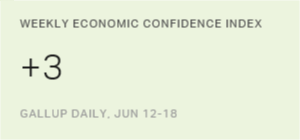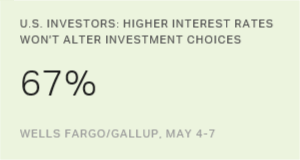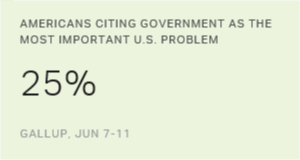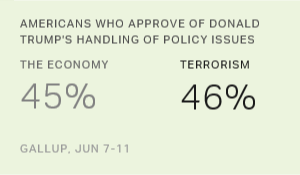Story Highlights
- Index has ranged between +2 and +4 since early May
- Current conditions component stable at +9
- Economic outlook component negative for seventh consecutive week
WASHINGTON, D.C. -- Americans retained the same modest level of confidence in the economy last week as they have since early May. Gallup's U.S. Economic Confidence Index averaged +3 for the week ending June 18, within the narrow +2 to +4 range recorded in each of the prior six weeks.

Confidence in the economy remains considerably higher than it was before last year's presidential election, but it has weakened since the first quarter of this year. During that time, Gallup's U.S. Economic Confidence Index often reached double digits -- hitting +10 or higher -- and in the first week of March, it hit a post-recession high of +16.
In late March, the index fell to +5, coinciding with a temporary dip in the stock market. But while the stock market has since climbed to new heights, Gallup's U.S. Economic Confidence Index has not. In April, the index generally stayed at or above +5. However, the index has hovered between +2 and +4 since the beginning of May.
Gallup's U.S. Economic Confidence Index is the average of two components: how Americans rate current economic conditions and whether they believe the economy is improving or getting worse. The index has a theoretical maximum of +100 if all Americans were to say the economy is doing well and improving, and a theoretical minimum of -100 if all were to say the economy is doing poorly and getting worse.
For the week ending June 18, 32% of Americans assessed the economy as "excellent" or "good," while 23% said it was "poor," yielding a +9 current conditions score. This was on par with the previous week's reading of +11.
Slightly more Americans (49%) continued to see the economy as "getting worse" than "getting better" (45%), resulting in an economic outlook score of -4. Last week marked the seventh consecutive week the economic outlook component averaged a negative value -- the longest such streak since before the 2016 presidential election.
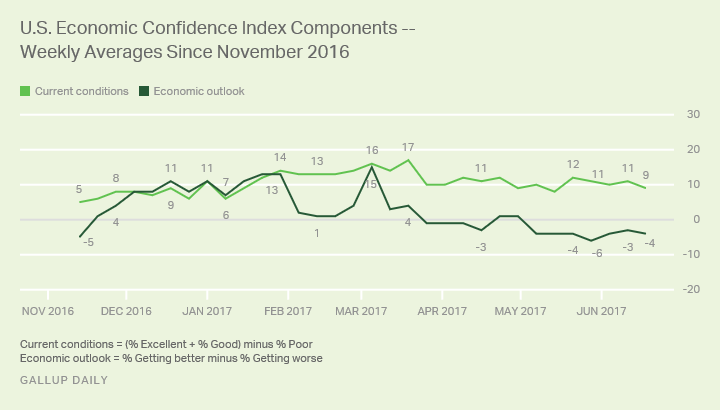
Bottom Line
The board of the Federal Reserve raised the benchmark interest rate last week, an action that signals the Fed's confidence in the U.S. economy but also potentially harms consumers due to higher interest rates. Although this move could temper the stock market's bull run if higher yields prompt investors to transfer their money from stocks to bonds, Gallup has found that most investors are not planning to alter their investment choices even if interest rates continue to rise.
Whatever the impact of the Fed's decision, it comes at a time when Americans' confidence in the economy has somewhat weakened. Over the past seven weeks, economic confidence has remained stuck at slightly positive levels, and expectations for the economy -- as measured by the economic outlook component -- have been more negative than positive.
These data are available in Gallup Analytics.
Gallup.com reports results from these indexes in daily, weekly and monthly averages and in Gallup.com stories. Complete trend data are always available to view in the following charts:
Daily: Employment, Economic Confidence, Consumer Spending
Weekly: Employment, Economic Confidence, Job Creation, Consumer Spending
Read more about Gallup's economic measures.
View our economic release schedule.
Survey Methods
Results for this Gallup poll are based on telephone interviews conducted June 12-18, 2017, on the Gallup U.S. Daily survey, with a random sample of 3,551 adults, aged 18 and older, living in all 50 U.S. states and the District of Columbia. For results based on the total sample of national adults, the margin of sampling error is ±2 percentage points at the 95% confidence level. All reported margins of sampling error include computed design effects for weighting.
Each sample of national adults includes a minimum quota of 70% cellphone respondents and 30% landline respondents, with additional minimum quotas by time zone within region. Landline and cellular telephone numbers are selected using random-digit-dial methods.
Learn more about how the Gallup U.S. Daily works.
